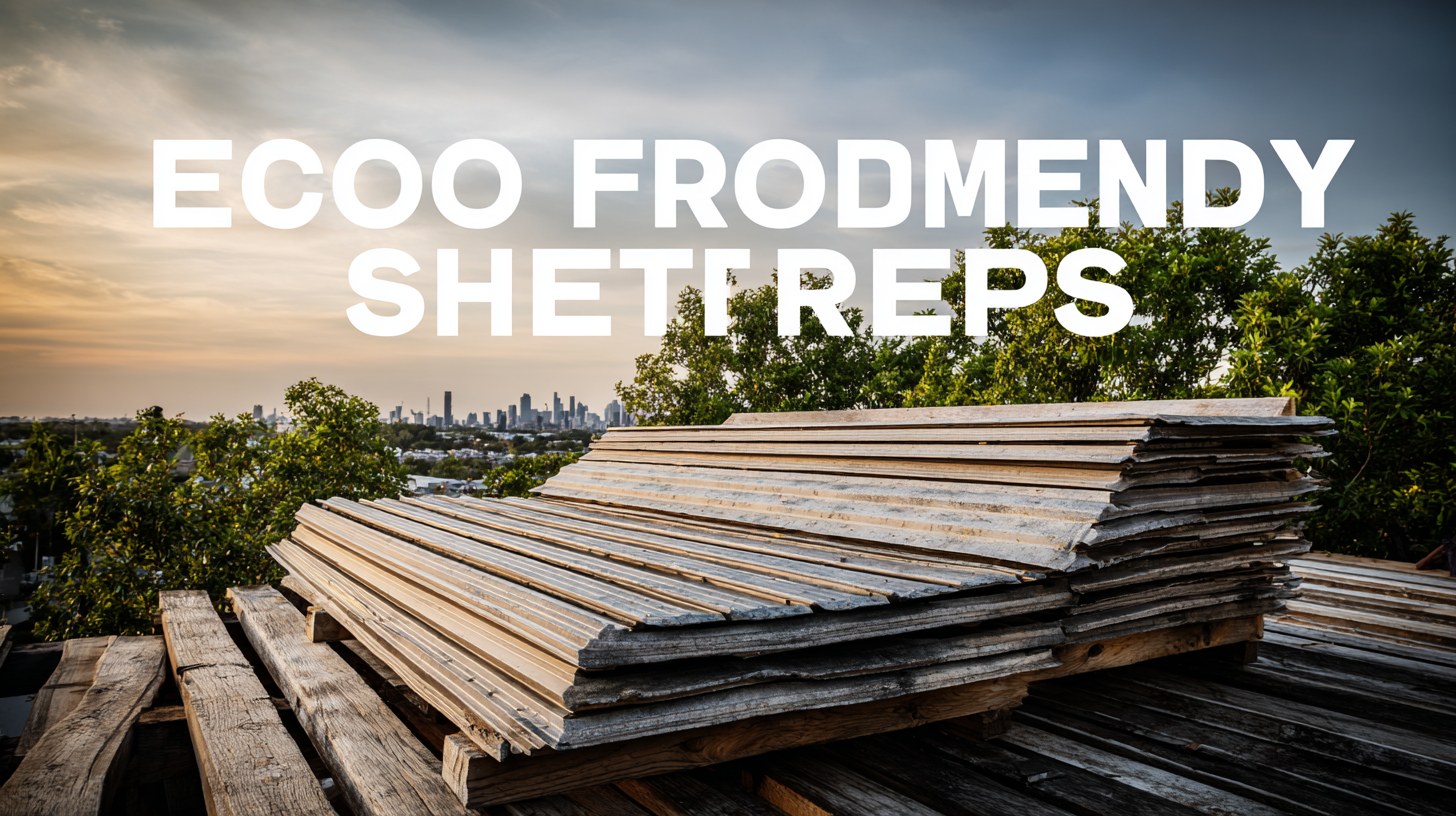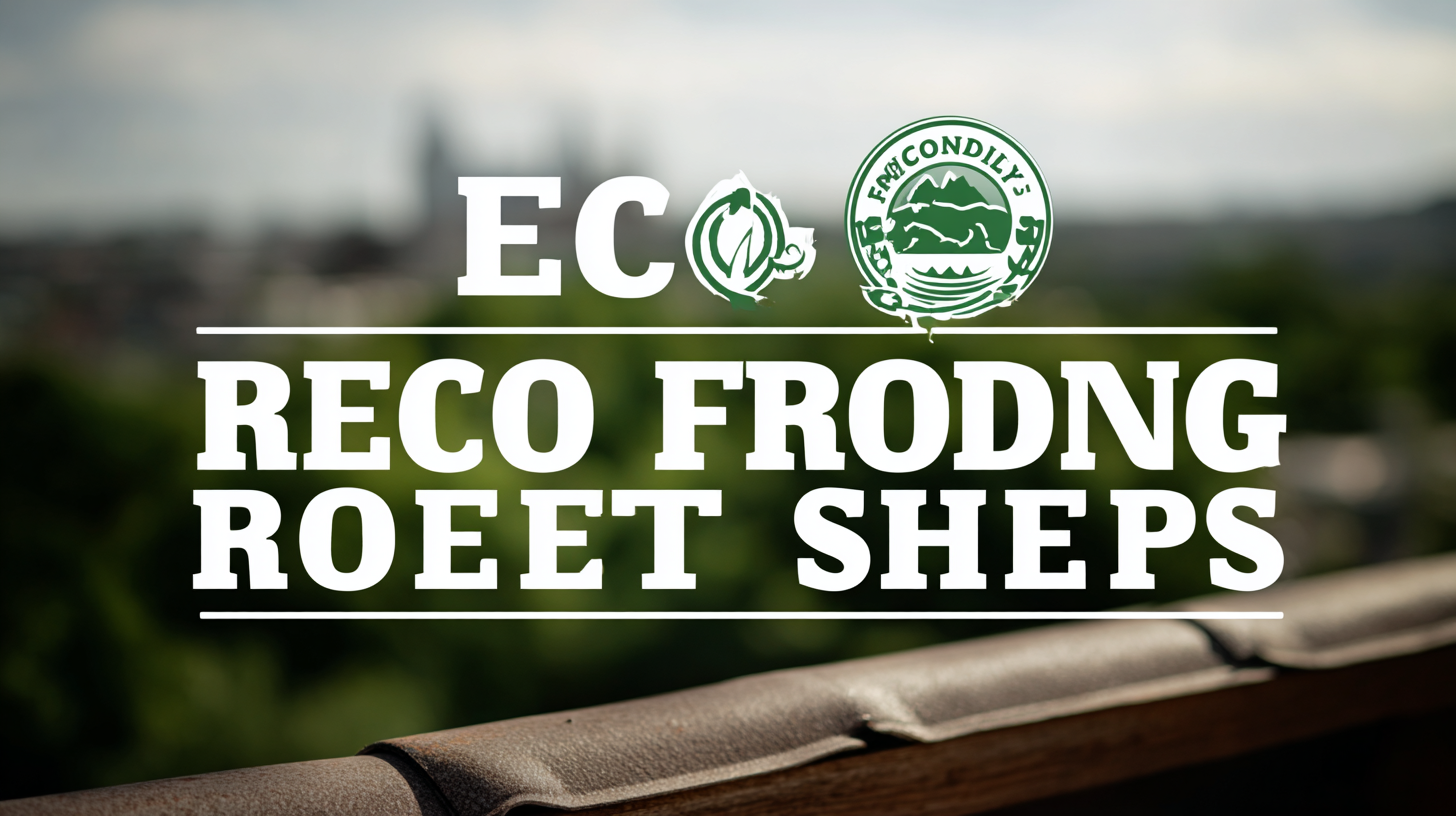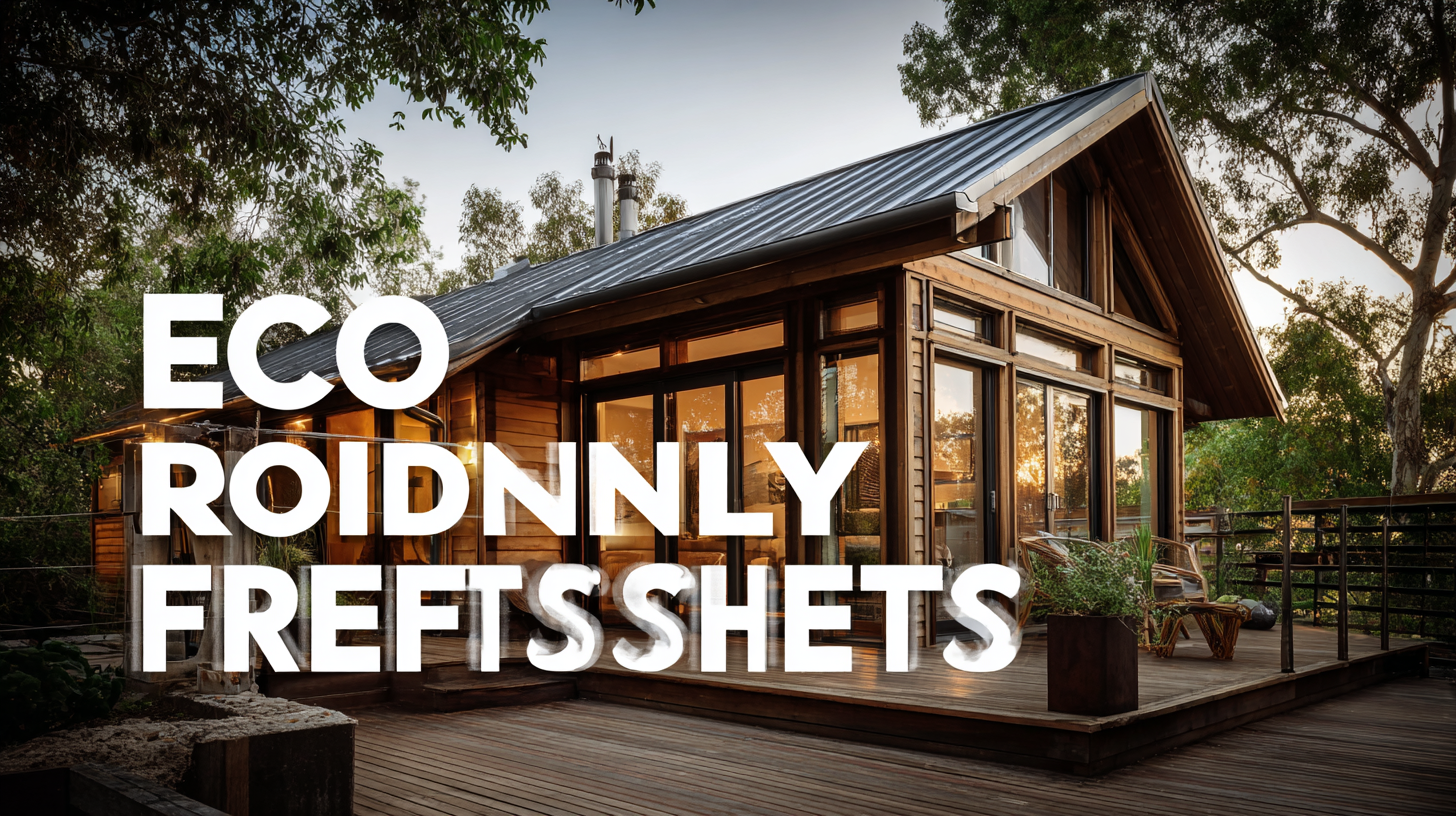
Leave Your Message
-
Phone
-
E-mail
-
Whatsapp

In the pursuit of sustainable building practices, the choice of materials plays a critical role, and one of the most impactful factors is the roofing system. Eco-Friendly Roofing Sheets have emerged as a vital component in reducing environmental footprints, with studies indicating that buildings account for approximately 39% of global carbon emissions, primarily due to energy inefficiencies in traditional roofing materials. According to the Global Green Building Trends report, nearly 30% of construction professionals prioritize eco-friendly materials in their projects, emphasizing a growing trend towards sustainability. As consumers become more aware of their ecological impact, selecting the right Eco-Friendly Roofing Sheets not only enhances the energy efficiency of a building but also contributes significantly to resource conservation. In this blog, we will explore how to choose the best eco-friendly roofing options and outline key strategies for identifying quality suppliers to ensure that your sustainable building project meets both performance and environmental standards.

When selecting eco-friendly roofing sheets for your sustainable building project, several critical factors must be considered to ensure you make a responsible choice. First and foremost, material selection plays a crucial role. According to a report by the Eco-Audit Institute, roofing materials like recycled metal, bamboo, and slate can significantly reduce environmental impact. Recycled metal roofing, for instance, can reduce waste by diverting about 55% of its content from landfills, making it a practical choice for eco-conscious builders.
Another important aspect is the energy efficiency of the roofing sheets. A study from the Institute of Green Building Research highlights that materials with high solar reflectance can lower indoor temperatures, thereby reducing the need for air conditioning. Opting for cool roofing options can decrease energy costs by up to 20%. Additionally, it's essential to consider the product's lifespan and maintenance needs; materials that require less frequent replacement or maintenance tend to be more sustainable over time. When weighing these factors against aesthetic preferences and budget constraints, you can make an informed choice that aligns with your project’s sustainability goals.
When it comes to choosing eco-friendly roofing materials for sustainable building projects, several options stand out. First, metal roofing, particularly aluminum and steel, offers durability and recyclability. According to a report by the Metal Roofing Alliance, metal roofs can last over 50 years, reflecting solar heat and thus reducing energy costs by up to 25%. Furthermore, up to 90% of metal roofing material can be recycled at the end of its life cycle, making it a wise choice for environmentally-conscious builders.
Another excellent option is bamboo roofing, which boasts rapid renewability and strength. Bamboo can grow up to 3 feet in just 24 hours, making it a sustainable resource for eco-friendly construction. A study conducted by the International Network for Bamboo and Rattan highlights bamboo's potential to reduce carbon footprints significantly because of its ability to sequester carbon effectively.
**Tips:** When selecting roofing materials, consider their lifecycle analyses to determine their environmental impact. Also, prioritize local materials to reduce transportation emissions and support local economies. Lastly, consult with eco-certification programs to ensure your choices align with sustainability goals, maximizing both environmental and economic benefits.
When embarking on a sustainable building project, selecting the right eco-friendly roofing sheets is crucial not only for environmental integrity but also for economic feasibility. A cost analysis of eco-friendly roofing options reveals that while initial investments can be higher, long-term benefits often outweigh these expenses. For instance, materials like green roofs are increasingly recognized for their ability to improve energy efficiency, reduce peak rainwater runoff, and even enhance building aesthetics, which can lead to higher property values.
Moreover, recent trends highlight a rising demand for advanced roofing technologies, projected to boost the roofing material market significantly by 2034. As the green roofing sector matures, the integration of innovative features such as rainwater harvesting systems can further enhance the sustainability of projects. These systems work in tandem with green roofs, optimizing water management and promoting biodiversity, thereby presenting a compelling case for their inclusion in modern building designs. By carefully evaluating the cost-benefit landscape of various eco-friendly roofing options, builders can make informed decisions that align with both budget constraints and environmental goals.

When selecting eco-friendly roofing sheets, durability and longevity are paramount considerations that significantly impact the sustainability of your building project. Eco-friendly materials like metal, recycled plastic, and sustainably sourced wood not only reduce environmental footprints but also offer impressive resilience against the elements. For instance, metal roofing can last over 50 years with minimal maintenance, resisting rust and severe weather conditions. This longevity means fewer replacements over time, reducing waste and conserving resources in the production of new materials.
Moreover, the choice of insulation and roofing design can enhance the overall lifespan of these eco-friendly materials. High-quality insulation minimizes heat loss in winter and reduces heat gain in summer, contributing to the roofing system’s efficiency. Opting for reflective roofing sheets can also lower energy costs and prolong the roofing material's life by reducing thermal expansion and contraction. Ultimately, investing in durable and sustainable roofing sheets not only benefits your building’s environmental footprint but also provides peace of mind through long-term performance and resilience.
When considering eco-friendly roofing solutions, energy efficiency plays a crucial role in the sustainability of your building project. According to the U.S. Department of Energy, nearly 40% of energy consumption in the residential sector is attributed to heating and cooling, making effective roofing materials essential for reducing energy loads. Environmentally friendly roofing options, such as reflective metal, cool asphalt shingles, and green roofs, significantly lower the heat island effect and can decrease cooling energy requirements by up to 30%.

Moreover, a report by the National Association of Home Builders emphasizes that eco-friendly roofing materials can enhance a building's energy efficiency ratings. For instance, reflective roofing surfaces can reduce rooftop temperatures by 50 degrees Fahrenheit or more, directly contributing to lower energy costs for air conditioning. Furthermore, investing in sustainable roof systems can lead to a longer lifespan, reducing the need for frequent replacements and minimizing waste. Thus, selecting the right eco-friendly roofing sheets not only supports environmental goals but also translates into substantial long-term savings on energy bills.